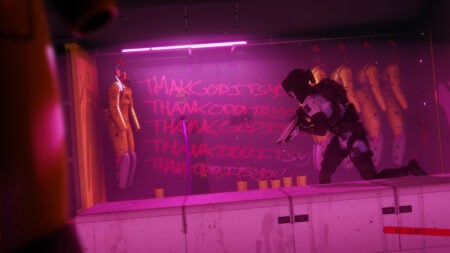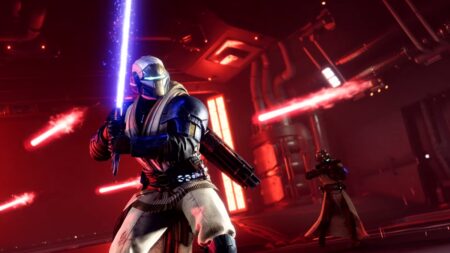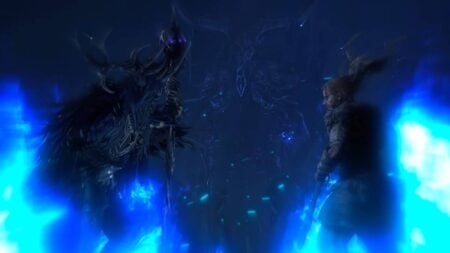Skip To...
The indie gaming scene has always been a crowded space, but there was one that stole my heart. When IronOak Games released For the King, it had everything I was looking for in a game. Turn-based RPG combat, roguelite systems, and a map in the form of a board game. After 5 years, the studio behind this iconic indie game has returned with For the King 2, and while I’m often nervous about sequels, I’m happy to report the team improved on almost all of them.
For the King 2 Review: Here We Go Again

Watching a party of characters that you’ve created grow and progress organically throughout an adventure produces a very special feeling. You watch their journey from humble village folk in common drabs to powerful soldiers donning Leprechaun hats and ice-throwing staves. And at the end of the campaign, there’s a palpable tension lifted as you sigh in relief knowing you’ve guided them successfully to victory. It’s a feeling very few games nail and For the King 2 does it sublimely once more.
Story: Under the Queen’s Thumb

For those who have not played any of the games in this series, the events of both entries take place in Fahrul. A realm full of fantasy creatures where the heroes are farmers, alchemists, blacksmiths, and more. Your characters are not the chosen ones with special powers. They are common people, like a cook or a farmer. In the first game, you had to avenge the death of the King. The Queen hires your group of adventurers, and it’s up to you to stop the calamity that the one who committed regicide is causing. In the sequel, for reasons I won’t spoil, the Queen has gone mad and has Fahrul under her tyranny.
This time, you’re not only a group of adventurers hired by the queen. You are the face of the rebellion. Four heroes embark across Fahrul to free this land from the person who swore to protect it. And so begins the story, which I enjoyed much more than the first game. In the first installment, you could see the betrayal and the final boss a mile away. It was so predictable that it never became relevant to me. Here, For the King 2 divides the story into five well-narrated chapters, from the building of the resistance to the siege of a castle.

There are several classes, and they are all medieval village trades. My first adventure consisted of a team formed by a blacksmith, an herbalist, a stablehand, and a scholar. And this is where the game allows you to create your own backstories for each. In preparing them for their journey, I felt almost a sense of parenthood and responsibility, which made losing any of them absolutely heartbreaking. In the last fight of the second chapter, I saw my heroes fall one by one in front of the Goblin King because I didn’t properly prepare. That’s the magic of For the King 2. The story lasts as long as you want and is rife with genuine consequences that dial up the tension.
The studio also wanted to improve the narrative of the main story itself. While it maintains the ironic and irreverent humor of the first game, now more things make you feel like you’re living in a series of movies where everything you do changes with each installment. Heck, you even have a nemesis. No matter how many times you defeat him, there is a character that keeps returning. More than annoying, he fascinated me. Every time I saw him, I knew I was in for a legendary duel with that person who started as me. There was a more personal weight to my team, which made me get into the story entirely.
Gameplay: Procedurally Generated Madness

Certain iconic things in the game series return in For the King 2. You have a board game-like map full of tiles where everything changes in each adventure. Different stats dictate your rolls, similar to Baldur’s Gate 3. And roguelite elements like permadeath and unlockables you get by spending currency you amass after several campaigns. The reality is that not much changes from the first game, which can be good or bad for some. Personally, I liked the new additions, but I also enjoyed more of what made me fall in love with the series in the first place.
Generally, the essence of the gameplay loop is as follows: you start your adventure, your characters roll their speed die, and you advance several tiles to discover things and engage in combat. The fun is that everything is random, and you don’t know what you might get from a destroyed wagon to a mushroom field. Even these have random moments. If you fail a roll, enemies might come out of the wagon, or the mushrooms will kill you instantly. It’s a game that, as colorful as it is, punishes you with every decision, and planning is essential. A false step or a lone adventurer on the map can cost you the campaign.

Planning also goes beyond exploration. Combat has changed a lot. It’s no longer simply characters in a single line. There are 4 characters, and the arena is a grid of 8 spaces. Here, you have to plan how to move your team. Those with shields can cover those in the back row from melee attacks. Of course, the melee characters can only attack if they are in the front row. Also, new area attacks affect these spaces, challenging players to plot each move meticulously. Combat is far more tactical and much less forgiving on specific difficulties, creating a more engaging experience.
Additionally, one of the things that fascinated me about this depth of combat in For the King 2 is how the game forces you to think outside the box. In one encounter with Goblins, one of them threw a bomb into a column where my Blacksmith and Herbalist were. It generated puddles that gave my characters the confusion status. As there were two other characters next to them, I couldn’t make them escape. They got confused and used crucial items I didn’t want to waste. From thinking that my best strategy was to have the four of them together, I had to modify my plan in each fight.
I could say that everything related to gameplay had been improved across the board in For the King 2, but that’s not quite the case. The user interface is really less than ideal. Navigating through it in combat is seriously tedious. What game in 2023 doesn’t let you exit a menu by pressing “ESC”? Come on, now!
Choosing skills isn’t very enjoyable, either. It never saves the last skill you used, and you must click too many times for something so easy. Also, if you want to use your focus to increase your chance of landing an attack, sometimes it doesn’t save the target you select, and you must click a lot more. It’s a simple thing, but these flaws detract from the fun of this sequel.
Graphics and Audio: Beautifying Fahrul

Ever since the original For the King, I’ve fallen in love with low-poly style graphics. It’s simple but has personality, and I love the contrast between roguelite difficulty combined and whimsical enemies. The sequel keeps its style, but the characters don’t feel like old-school Runescape characters. Your heroes have a smoother and more unique style, and For the King 2 takes the style that worked from the first and modernizes it in a way that doesn’t lose this compelling aspect.
The audio is also improved compared to the first game. Although the original tone of the franchise returns, it feels much more epic. Each unique fight, such as against the Scourge, has its own main music track that, despite being a static combat game, generates more excitement than many action games. The combination of music tracks pertaining to medieval taverns evolves with different fights that evoke feelings of danger and epicness.

Again, though, the UI is sadly atrocious. The first game hardly excelled here to begin with, but it was at least serviceable. If the sequel improved almost everything, why did it take ten steps back in its interface? Opening the inventory takes a lot of work. You have a button to open the general inventory; from there, you must scroll through each character. Everything could be fixed by clicking on the character’s portrait, but no. Besides, this not only applies to the campaign’s map. Even creating a character can get tedious with so many menus that just won’t close easily.
Conclusion: A Fantastic Board Game-like Adventure

For the King 2 is a fantastic game that can easily give you dozens of hours of fun. It has the replayability to keep you hooked, with many unlockables. While the game is quite difficult, it gives you what you need to get through the campaign. Plus, it’s a lot of fun to learn from your mistakes and plan a new adventure with a different team. For some reason, the UI takes a few steps backward and feels like a game from decades ago. It’s the one confounding design element for a sequel to land on, and hopefully, in the future, it’s reworked entirely. Outside of the clunky interface, this is undoubtedly an adventure to which I will devote another few hundred hours, similar to its predecessor.
For the King 2 is available on PC (Reviewed).
For the King 2 (PC Reviewed)
A sequel that improves upon its predecessor in meaningful ways.
Pros
- The new traversal options are fresh and engaging.
- The new grid-like combat adds new strategy layers.
- The iconic art style returns with many improvements.
Cons
- Many performance issues.
- Confusing UI elements.







